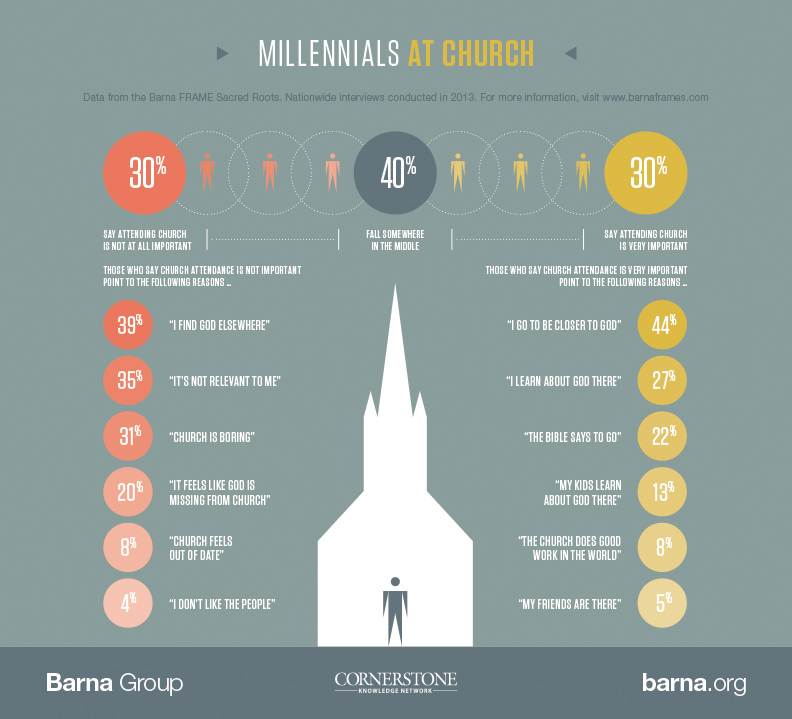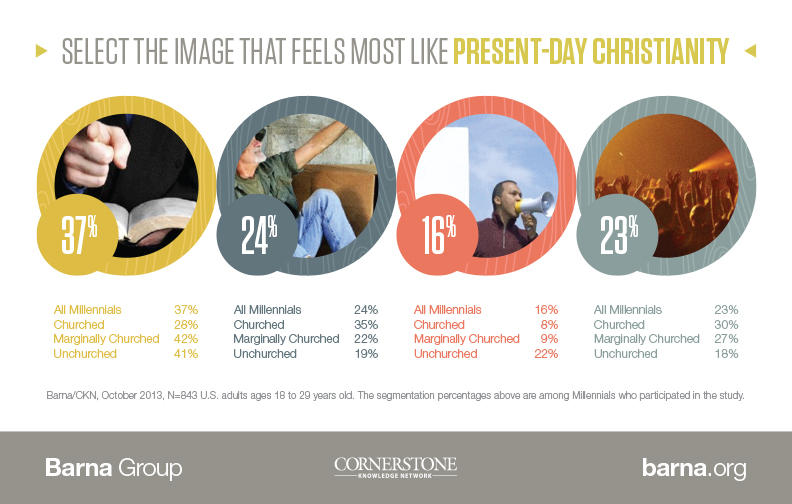Much has been written about the recent Pew Research poll about the condition of religion in America. I have said before that if we are all about the numbers this would be a little troubling, but I try to focus on quality and not necessarily quantity. Sure, it’s nice to have a full church but then again it’s nice when anyone shows up at all!
But what about the millennials?
Millennials make up the generation that follows Generation X, my generation. They were born between 1980 and 2000 although those dates have not been agreed upon. So that puts them between the ages of 35 to 15, a rather large portion of the population and, although I hate this term, our target audience.
By and large millennials distrust any organization and so they are not quick to “join up.” They are very tech savvy and will be apter to “check you out” on the internet than walk through your door. This is one of the main reasons you need to have a website for your church and not just a static website but a website that is built for the millennial generation (oh yes and is mobile ready) There will be more about the tech savviness of millennials in a future essay.
The Barna Group is a private, non-partisan, for-profit organization that conducts research leading to the understanding of cultural trends related to values, beliefs, attitudes, and behaviors. The research is geared towards those of us involved in church work, and it is necessary research for us to understand the changing times we live in. Although we do not market the church per se, we need to know where people are and what they are seeking.
In a recent survey of Millennials, conducted from January 17-23, 2013 more than one-third of respondents say that their negative perceptions are a result of moral failures in church leadership. And substantial millennials who do not go to church say they see Christians as judgmental (87%), hypocritical (85%), anti-homosexual (91%) and insensitive to others (70%). This is what we are up against!
When asked to select an image that best represent present day Christianity this is what the results showed.
41% chose the pointing finger, and 22% chose the man with bull horn. 19% chose the helping hand image and 18% the worship service image. We have a lot of public relations to do if we are going to reverse this trends.
One this Millennials desire is authentic Christianity. They can smell a fraud from 10 steps away and do not want to interact with them. They are seeking a deeper relationship with God and with others but in a gentler way than perhaps we are used to. They do not just want to be told how to live their lives they want to be authentically shown how to live and have open and frank discussion with people about their struggles and how they have overcome them.
So how do we fix this perception? Well, we can start by being less judgmental and move loving. We need leaders, both clergy and lay, which are dedicated to the Gospel message of love and acceptance. As I write in my last essay, acceptance does not mean approval but we first have to love people. If we have the message of eternal life, they will never hear it unless they come through the door.
Millennials wish to help change the world and so the church needs to be involved in helping their fellow man right in their neighborhood, so we need to have more opportunities for them to engage with the church at this level.
Millennials desire a place to find answers to living a meaningful life and also wish to experience transcendence in worship, in prayer, and in teaching. They do not need a liturgical experience that hip or cool but one that is authentic and real a place where they can come into contact with the living God and with real people struggling to live lives dedicated to God, not fake people who put on airs.
Not all hope is lost, and there is much more to understand about the research. I will be posting additional essays as well as podcasts about this shortly so stay tuned.


